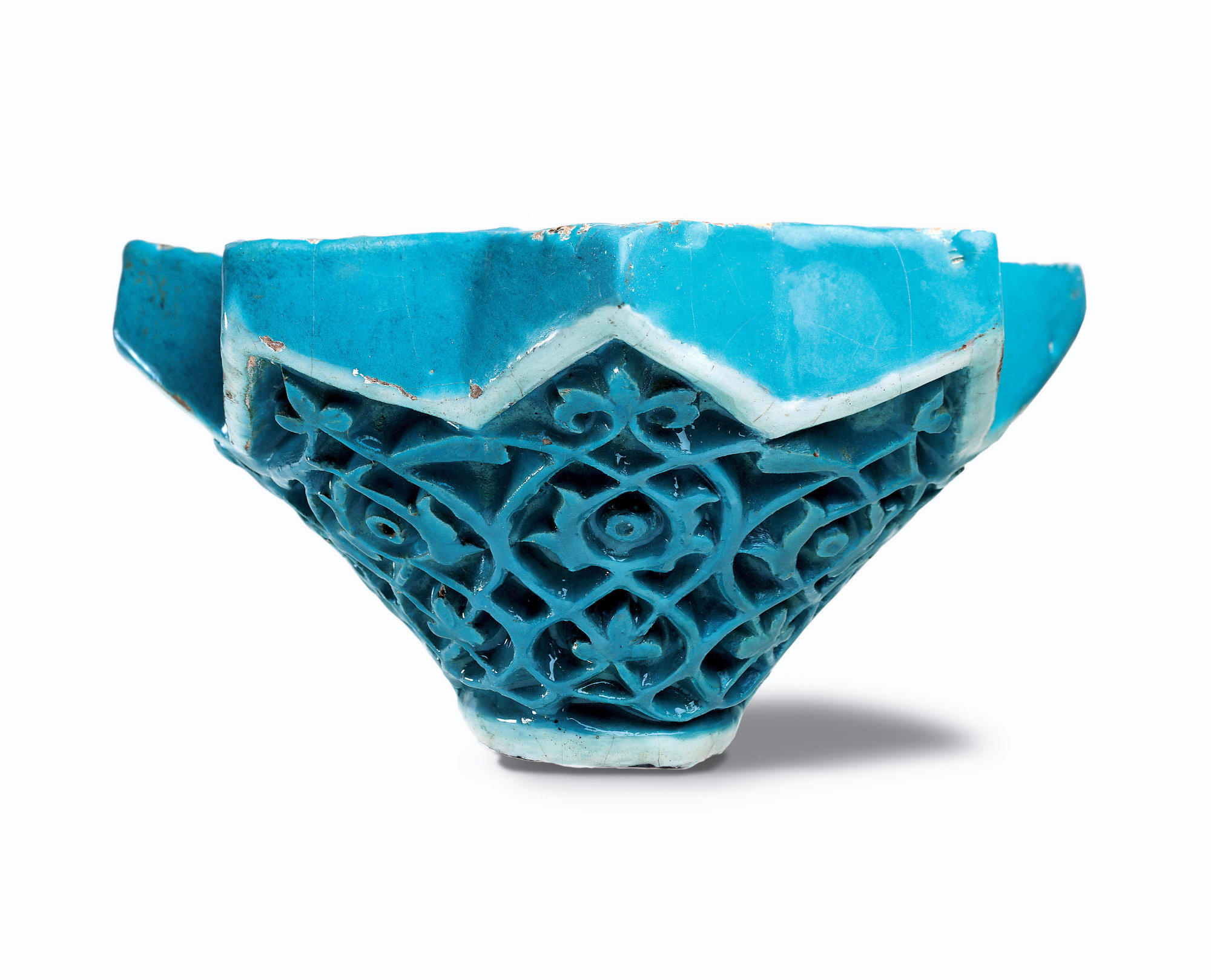Click on the image to zoom
Column capital
- Accession Number:AKM575
- Place:Central Asia
- Dimensions:16.8 x 26 cm
- Date:1300s
- Materials and Technique:Earthenware, carved, moulded
This piece effectively illustrates the way architectural vocabulary evolved in the Islamic world. By this stage the models inherited predominantly from the classical style, including the Corinthian capital, and from the Sassanid world, have been left far behind. The builders, whether they are working in the east or the west of the territories of Islam (dar al-islam) have developed and disseminated original solutions for building coverings and for the transition from a square ground plan to the circular dome. To achieve this they invented the muqarnas, an architectural module of disputed origin. Sometimes linked with Egypt of the Fatimid period, sometimes with Iran under the Seljuqs, the muqarnas evolves from being an architectural element crucial for the transitional zones, with a high degree of architectural functionality, into a purely decorative element. It very quickly becomes the repetitive element in a network of stalactites - of which the most dazzling examples date from the fourteenth century, in the two domes of the Alhambra (Hall of the Two Sisters, and Hall of the Abencerrajes) and, a little later in Central Asia, in the shrine of Ahmad Yasavi (Yasi, in today’s Turkistan in Kazakhstan). This capital is a fragment of a complex three-dimensional puzzle or, more probably, one element of a squinch; its decoration is typical of the fourteenth century - a network of stems springing from a lotus flower. The piece retains some traces of the mould removal - a tricky exercise that has left some ridge marks on the base. Removing the mould is a particularly challenging operation where the relief is very pronounced, as is the case here. Similarly the second capital, with its less pronounced relief, belongs to a type abstracted exclusively from the classical model. Its surface is delicately pleated, accentuating the geometrical handling of the volumes, while the trencher and springer are merged in a single block.
Note: This online resource is reviewed and updated on an ongoing basis. We are committed to improving this information and will revise and update knowledge about this object as it becomes available.


